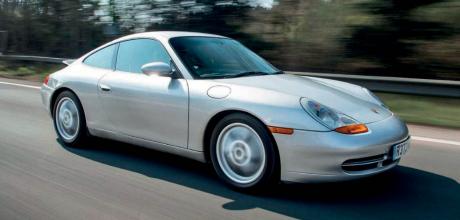1997 Porsche 911 Carrera 996.1
Founder member of the water-cooled 911 family, the 996 has been derided for mechanical issues and less-than-sharp build quality. Yet, it exudes more charisma than its successors and, today, represents the best-value 911 available. We track a long-term high-miler…
Words Johnny Tipler
Photography Adrian Brannan
SOUL BROTHER
The base model 996 is everything you need.
CHEAP THRILLS: BASE MODEL 911 OFFERS HUGE VALUE FOR MONEY
The base model 996 is everything you need. Perhaps you’ve been hankering after a 911 for a while, uncertain where to jump into the plethora of variations on the theme?
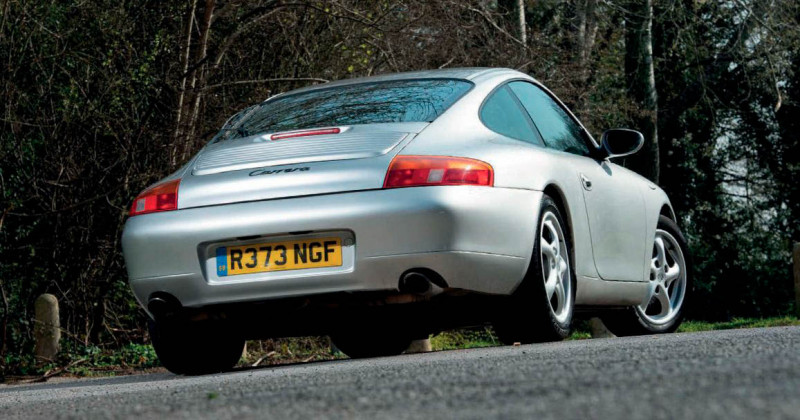
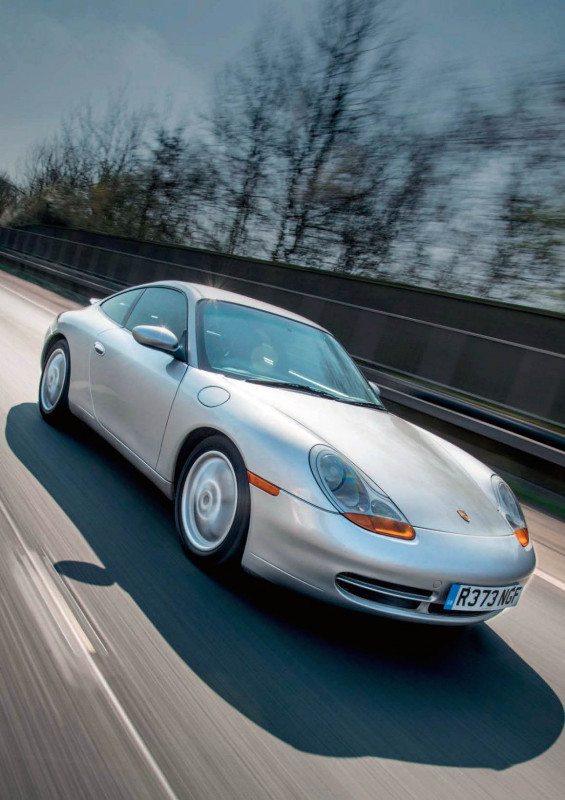
Inevitably, price has much to do with your choice and, unless you have deep pockets, air-cooled classics are a great deal of money these days. This puts you in more recent water-cooled territory, with the 996 and 997 your potential entry-level 911.
Sure, there’s a broad range of cars within the price range of, say, between £15k to £25k, with good 996s vying with mediocre 997s through the whole span, but let’s stick with the 996, because a good one represents better value. I’ll tell you why in a minute.
WHETHER 3.4 OR 3.6, THE 996 PROVIDES GREAT ACCELERATION, A PERFECTLY DECENT RIDE AND EXCELLENT HANDLING IN STANDARD FORMAT
It hasn’t always had an easy ride, the 996. Announced in 1996 together with the 986 Boxster, Porsche’s radical communal-platform philosophy contributed immensely to the company’s salvation as a manufacturer ahead of its other saviour, the game-changing Cayenne.
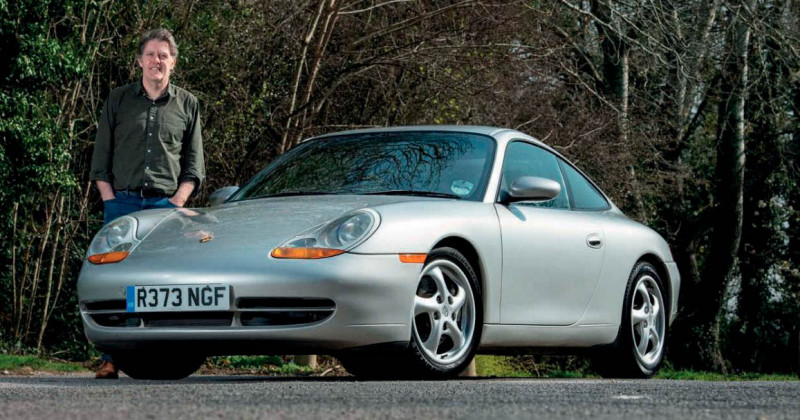
Not many Porsches polarised enthusiast opinion as markedly as the 996, however, successor as it was to the beloved air-cooled 993. The 996’s Boxster stablemate was less criticised due to treading what many saw as new ground (914 aside), whereas the 996 sought to reinvent the 911.
Propositions seldom come more audacious. In production from July 1997 and on sale from late autumn that year, the 996 was, at the outset, a love-it or loathe-it car. And, unsurprisingly, given fifty years of air-cooled antecedents, many Porsche buffs were prepared to loathe the model with an almost sectarian fanaticism.
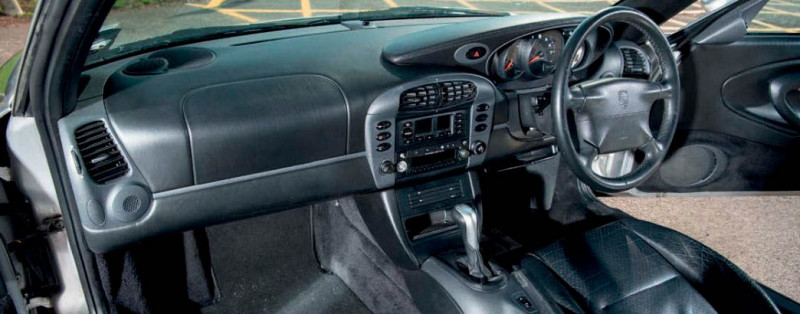
Air-cooled die-hards considered it to be little short of an abomination, never mind that it looked a bit like an overbaked 993 (it was seven inches longer, two inches wider and shared much of the same suspension layout), or that, from the front at least, it looked very much like its junior sibling, the entry-level Boxster, with which it shared most of its frontal body panels and hardware. Notwithstanding how the 996 maintained the marque’s tradition of a rear-mounted flat-six powerplant, what really upset naysayers was the fact the engine was water-cooled. This, of course, is why liquid-cooled 911s are known as ‘kettles’, somewhat overlooking the manufacturer’s transaxle family of products, which had been thus chilled since the late 1970s.
The cognoscenti, on the other hand, knew, for several reasons, Porsche simply couldn’t carry on building aircooled engines — emissions legislation and performance limitations were at play — and welcomed the 996 with open arms. It was as modern, as contemporary, as aesthetically stylish and, above all, as fresh as Porsche devotees could have realistically hoped for.
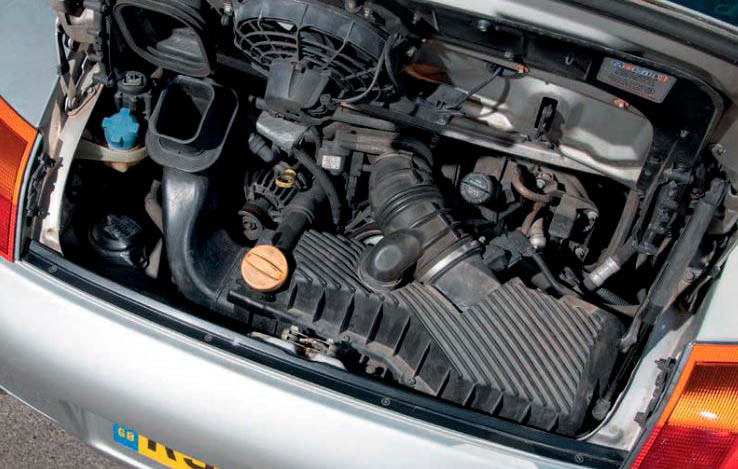
Moreover, it had just the right blend of restrained aggression and timeless elegance to make it as much at home in Knightsbridge as the Nürburgring. Little wonder, by the time production ended in early 2005, the 996 had sold well over 150,000 units of all derivatives. More significantly, on a corporate level, in consort with the 986 Boxster, the 996 transformed Porsche from its mid- 1990s status as one of the world’s most endangered independent car companies to the most profitable of all. Performance-wise, the 996 was no slouch, even in base 3.4-litre format. The first water-cooled 911 went, and still does go, remarkably well, too. From standstill to 62mph in 5.2secs and on up to a maximum of 174mph, allied with flawless brakes and a poise which belied a quarter of a tonne of engine slung out aft of the rear wheels. It sounded good, too, even though the flat-six bark was somewhat muffled when compared to that of an air-cooled boxer. Here was a 911 you could drive every day and in all weathers, and which, with 10k-mile service intervals, wouldn’t cost an arm and a leg to maintain. To this day, the 996 remains every inch a proper Porsche. The 997 which followed on is better — marginally in some ways, significantly in others — and you’d expect nothing less, but only because of what Porsche learned and acted on while it was building and marketing the 996.
ON THE MENU
There are plenty of 996s to choose from. The range quickly diverged into a cluster of different models, from reardrive Carrera to four-wheel drive Carrera 4, begetting the S version, Cabriolet, Targa, Turbo, GT2 and GT3. Now, as in its heyday, there’s a 996 for everyone and, like any 911, it makes you feel better about yourself than you would imagine any car ever could. That’s positive automotive therapy for you! A good 996 represents amazing value for money, too. They stopped depreciating several years ago, and indeed, values are climbing. Gone are the days when you could pick up a usable one for £10k, which is what our featured car cost owner Andy Whittle back in 2012. You need to be thinking along the lines of £15k in the present, even for a less favoured Cabriolet or Tiptronic, though there’s nothing amiss with either of those configurations. And don’t overlook the clever sliding glass-roof Targa, either. The 996 Carrera was launched in rear-drive format, with either a six-speed manual gearbox or a five-speed Tiptronic semi-automatic. The Tiptronic is a superb system, if a little tardy, especially compared with its PDK successor. Some drivers prefer it to manual. It’s worth trying both shifts — you may decide Tiptronic will do nicely. It actually learns to adapt to your driving style according to use of throttle pedal. In chronological terms, the all-wheeldrive and Porsche Stability Management (PSM)-equipped Carrera 4 was released in 1999, closely followed by the rear-drive and manual-only GT3. And that particular masterpiece was followed a year later by the wide-bodied 420bhp four-wheel drive 996 Turbo and, to celebrate the new millennium, the limited-edition normally aspirated Millennium model. In early 2001, the 462bhp twin-turbo GT2 was discharged, featuring Porsche Ceramic Composite Brakes (PCCB). A year later, Porsche broadened the range’s appeal with the glass-roofed 996 Targa. The model’s intriguing electronic slide-back roof was developed from that of the aircooled 993, where the glass roof panel retracted into the rear screen, which also conveniently doubled as a hatchback. 2002 also ushered in the Turbo-bodied, normally aspirated Carrera 4S. A few months later, along came a new GT3. During 2004, there was one launch after another, including brand-new Cabriolet versions of the Carrera 4S and Turbo, a 381bhp GT3 RS, another special-edition anniversary Carrera to celebrate forty years of the 911, the 450bhp Turbo S and an uprated GT2. These standout models are well outside the scope of our feature, but I flag them up to illustrate the broad appeal of the 996. A host of minor improvements were introduced throughout the 996’s production lifespan, but by far the biggest changes were wrought for the 2002 model year. Externally, the 996 received revised front and rear aprons with improved aerodynamics and, most obviously, updated headlights. Inside, there was a new three-spoke steering wheel, and, for the first time, an opening glovebox, complete with cup holders. The Cabriolet gained a glass rear screen. If you fancy a 996 drop-top, it’s worth noting you can turn it into a coupé by fitting a factory hardtop. Way more significant than all this, though, were the changes to the engine. The previous 3.4- litre VarioCam unit was replaced by the 3.6-litre flat-six with Porsche’s VarioCam Plus technology, previously reserved for the Turbo. This not only gave the basic models more low-speed punch, but also increased reliability. Other factors influencing desirability include bore-scoring and IMS bearing failure, which I mention later on, and crankshaft-seal oil leaks, but these issues don’t affect many cars, and there are now well-known solutions and cures for most of the major maladies, short of a replacement engine. Besides, typical prices for earlier models are low enough to take a chance on.
SILVER SURFER
Back in 2017, my own mission into 996 ownership was as risk-free as could be. Armed with a Cayenne and trailer, I ventured to the Netherlands to view an engineless Speed Yellow Carrera 4 at breakers and parts purveyors, Van Zweeden. I settled on a going concern, an Arctic Silver 996, at Halesowen-based PorscheShop. With 45k miles on the clock, PorscheShop Managing Director, Ian Heward offered to equip the car with a carbon-fibre Y-pipe induction kit, installed with a pair of K&N cone filters at either end. He got the ECU remapped too. In addition, the car already made use of a short-shifter, Alcantara headlining, Dansk exhaust and GT3-style sills. By way of 30mm H&R lowering springs, I had the ride height lowered by STR Service Centre in Norwich. Latterly, it had a set of Cargraphic silencers fitted, which I watched being made and fitted at Phoenix Exhausts at Cullompton, Devon. The aural benefits were immense. As I’ll demonstrate, it’s entirely feasible to make your standard 996 look like a snarling Carrera Cup bruiser, and it was only a matter of time before I swapped the front panel of my 996 for something racier. I also switched wheels, from perfectly decent eighteen-inch Carrerastyle five spokes for imitation split-rims. Sure, the hot GT3 is subtly different from the standard 996 in the looks department, and not difficult to imitate, but why stop there? Let’s get into more rarefied territory and go Carrera Cup. Or something like it. Design 911 offered just the look I wanted, though it wasn’t absolutely specific to any particular hotted-up 996, which made it even better. I wasn’t seeking to emulate anything precisely, just give the car more of a sporting image to match its modest power upgrades. Having ordered up the new fibreglass nose, I booked it in with Wayne Parker at Norfolk Premier Coachworks to for paint and fitting. Next up on my reckless transformation agenda was a first-generation GT3 swan-neck rear spoiler. Once again Norfolk Premier Coachworks did the honours. Gilding the lily? Yes, and why not, when the car can always be returned to standard if necessary. I’ve always had a thing for ducktail spoilers, and on a visit to RUF Automobile in Pfaffenhausen, Alois Ruf Jr very kindly donated a leftover ducktail of the pattern featuring on his 996-based RUF RTurbo. This wasn’t quite the last body update carried out, though. Eventually, I got fed up with grinding the Carrera Cup nose on traffic humps, leading me to get PorscheShop to paint and fit a second-hand 996 Turbo nose panel. You may wonder why, having lavished so much on the car, I sold it. Laid up in hospital with sepsis (burst appendix) and time to kill, I decided I didn’t want to have such a large whack of money sitting around doing nothing, and that a 986 Boxster S, at half the price, would be plenty good enough. With hindsight, I would probably not have gone down this route, but it’s done now. But enough of my shenanigans. Our feature car is more to the point, representing typical 996 ownership, being unmodified and having been run as a daily driver for the past decade. The original supplying dealer was Lancaster, now known as Porsche Centre Colchester, and the only aftermarket parts are Dansk exhaust boxes. Andy bought his 996 from MR Performance Cars at South Newton near Salisbury, Wiltshire, in 2011. It was listed on eBay for £11k, but when he went to have a look, they dropped the price to ten grand. “When I first got the car, I took it to the official Porsche dealer in Guildford to be serviced,” Andy reveals. “I then had it serviced back at MR Performance for seven years or so. More recently, the car has been serviced at Eporsch in Bisley, Surrey, primarily because the company’s base closer to where I live. I’m proud to say my 996 has now covered 172,674 miles and is going better than ever. I know 996s get a lot of flak for IMS and RMS issues, but mine hasn’t used a drop of oil since I’ve owned it. And I like to put the car through its paces — it regularly gets bounced off the rev limiter.” Way to go, Andy! He’s obviously spent a fair amount on regular servicing and maintenance over the years, but he’s determined to get his 996 to 200k miles pretty soon, without it having to undergo any major mechanical work or significant spend. An RMS upgrade is a sensible precaution if a new clutch is needed, but in my experience, stories about IMS bearing failure is overblown. It’s not a myth and, as a precaution, I did get the IMS changed on my own 996. The work was carried out by Autofarm. The company’s technicians found the old IMS was in perfect condition. This is the thing: you can’t be sure without dismantling. Andy eulogizes. “These are great cars! In its most basic form, like mine, the ordinary 996 is the most distilled example of the 911, delivering the purest interpretation of the 911 driving experience. Some people say the 996 is the black sheep of the 911 family, but actually it’s got everything you really need to enjoy Porsche ownership.” His is no show queen, obviously. Indeed, by Andy’s own admission, his 996 is a wee bit rough around the edges as well as being a highmiler, but all this is testament to the fact that he drives it hard and on a daily basis. And that, after all, is the point of a 911.
MAKE THE DROP
My own 996, known as ‘Pig Energy’ in deference to its number plate, P16 NRG, bore me to Portugal, Brittany, Normandy, Germany and Belgium on several occasions, as well as locations all over the UK. In two years, I clocked up around 30k miles on a vast cross-section of roads, including Zandvoort race circuit. Lowering the suspension makes for focused handling, with more acute turn-in and harder ride. Some might find this tiresome after a while, but it suited me perfectly at the time. Why change the habits of a lifetime?! I did the same with the subsequent 986, but changed the 30mm H&Rs for 10mm lower KWs to get a less jarring ride. The 996’s controls are pretty much identical to the contemporary 986 Boxster: unfussy, logical and intuitive to use and comprehend.
Whether 3.4 or 3.6, the 996 provides great acceleration, a perfectly decent ride and excellent handling in standard format. It’ll return about 28mpg on super unleaded. All-wheel drive Carrera 4 against rear-drive only Carrera? Comparative weights are 1,320kg for the Carrera against 1,375kg for the all-pawed Porsche, and this is manifest in a slightly more athletic performance by the rear-drive car, though the all-wheel drive 911’s poise and control gives it the nod when the going gets meteorologically tough. In practice, the four-wheel drive chassis declares itself pretty quickly, dictating one’s efforts to strong-arm the turns, though when the surface is damp, you can’t knock the confidence-inspiring security that the all-wheel drive system imparts. It’s less enthralling than the Carrera, though rewarding in its own competent way. Instantly, the steering feels heavier, thanks to the intruding front-wheel driveline, and the additional weight makes it seem a slightly bulkier beast. While the Carrera 4 lacks the sprightlier character of the Carrera, however, it feels more planted on serpentine roads and, on a smooth straight, the Carrera 4 feels more placid than the jiggy Carrera. In a few instances, such as a simple turn-around, the four-wheel drive becomes even more obvious, an impression completely absent in the more delicate steering response of the Carrera. In a really fast twisty road scenario, the four-wheel drive traction is amazing — it just sticks and goes. It’s not as enthralling as rear-wheel drive, though. It is extremely efficient, of course, but the Carrera 4 driveline rather lacks the soul of the Carrera. Porsche made a lot of money out of the ‘less is more’ mantra, certainly in respect of stripped out RSs, but the basic 996 really does provide a strong case for the same argument, being undoubtedly the most cost-effective route into 911 ownership, and as such it deserves to be taken more seriously and awarded more acclaim and respect. Still not convinced? Torn between 996 and 997? Perhaps you’re thinking about saving up for a 997 and enjoying the later 911’s superior build quality? I don’t think you need to. It’s an attitudinal thing as far as the actual cars are concerned — it’s about their personalities.
The 996 is of a more amiable, lighter disposition than the harder-edged 997. It has an easier-going ambiance, it’s more benign and less hard-nosed and you forgive minor foibles. And I don’t think this is an infinitesimal thing — live with a 996, jump into a 997 and it’s right there, manifest in the cold inscrutability of the newer model. The 996 has way more soul. And I think, traditionally, that’s what 911s were always about. Soul, man.
Above Prices are rising, but budget fifteen grand for a decent 996 Carrera. Below No frills, no fancy extras, just the base model Carrera, offering arguably the most undiluted drive of the 996 range. Above Once derided, the early 996’s ‘fried egg’ headlights have now found favour. Above Andy is looking forward to reaching his target of 200k miles in the early 996 Carrera, which has remained completely reliable at all times during his ownership, despite his enthusiasm for regularly bouncing off the rev limiter.
Above A base model 996 is the cheapest route into 911 ownership and has everything you need to enjoy the Porsche driving experience


